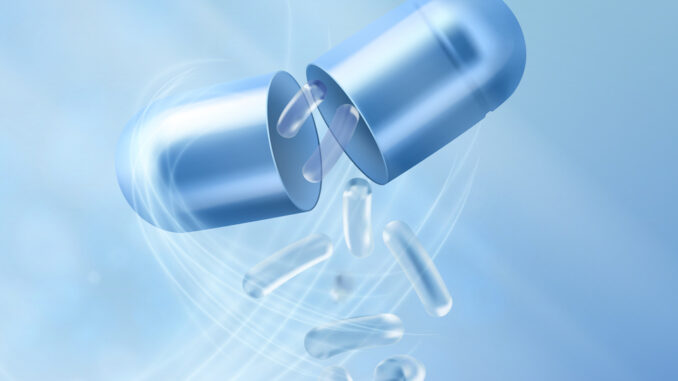
Nascent, Complex, and Evolving Market
The microbial population in the human body the human microbiome numbers in the trillions,(1) and genes within these microbes are often referred to as the “second genome”(2). Most commensal, symbiotic, and pathogenic microorganisms are found in the nose, mouth, skin, and urogenital and gastrointestinal tracts. The microbiome develops as people age and is affected by diet, medication use, genetics, and environmental factors. About 80% of these microbes are beneficial; in fact, they are important for maintaining health (3)
From its inception in 2007, the Human Microbiome Project, conducted by the National Institutes of Health in the United States, characterized microbial communities at five major body sites. Since then, efforts, such as the National Microbiome Initiative established in 2016 and the five-year Interagency Strategic Plan for Microbiome Research launched in 2018 by 23 U.S. government agencies, have sought to further elucidate the complex nature of the human microbiome and its role in health and disease (4).
Each individual’s microbiome represents a delicate balance. Disruption or dysbiosis can be caused by infections, antibiotics, stress, and other factors (3) and contributes to a plethora of health problems, including not only the obvious, such as gastrointestinal disorders and allergies, but everything from cardiovascular diseases to metabolic, autoimmune, and neurological disorders, diabetes, and cancer (4).
The mounting evidence for a link between the microbiome and disease has led to an explosion of drug development activity focused on microbiome-based therapies. The majority of microbiome-based therapies under development today target either diseases of the gastrointestinal tract, such as ulcerative colitis and irritable bowel syndrome, or diseases in which a strong link has been established with the gut microbiome, as is the case for psoriasis and diseases that involve the gut–brain axis, such as Parkinson’s disease and other neurological disorders. Others target cancers that are potentially linked to gut health, such as colon cancer and other cancers localized in the gastrointestinal tract. The third main area under investigation is infectious diseases, notably including recurrent Clostridioides difficile infections.
All of this activity is reflected in the high rate of growth predicted for the microbiome-based therapy market. Markets and Markets estimates that the value of the global human microbiome market, including probiotics, prebiotics, foods, diagnostic tests, and drugs, will reach $1.6 billion in 2028, expanding from $894 million in 2025 at CAGR of 21.3%.5 Other estimates place the value of the global human microbiome therapeutics market at $1.54 billion by the year 20276 and growing at a CAGR of 9.6% from $1.25 billion in 2020 to $2.16 billion by the fall of 2026 (7).
The number of microbiome-based therapies in the clinic is astounding. One source identified that 2,400 clinical trials involving candidates developed using microbiome science were underway in 2018, up from 1,600 in 2017, reflecting the rapid growth of the field. Today, there are investment funds dedicated solely to companies developing microbiome-based therapies, and at least 400 firms are actively working on different aspects of the microbiome.
Very few products have reached phase III clinical studies. Many more have reached phase II, and even greater numbers are in early-stage development. The first products likely to receive approval will be treatments for recurrent C. difficile infection. Candidates targeting diseases of the GI tract ulcerative colitis and others also look to have good prospects based on published early clinical data.
While no product has yet been commercialized, at least in the United States, the level of investment pouring into microbiome therapy development from both venture capital and Large Pharma is indicative of the growing recognition of the potential value of live biotherapeutic products (LBPs) targeting the microbiome. We strongly believe that, with microbiome companies reporting positive data readouts and Large Pharma increasingly active in this space, the microbiome therapy market has now reached a critical inflection point.
The challenge these companies face as they advance their microbiome-based therapies through clinical development to commercial launch will be navigating an uncertain regulatory landscape. While regulatory guidance pertaining to chemistry, manufacturing, and control (CMC) of LBP therapies exists in the United States for early-phase products, no such guidance is available for late-stage products. With the first wave of LBP therapies entering late-stage investigation before comprehensive regulatory guidance has been issued, the responsibility falls on sponsor companies and manufacturers like Arranta Bio to chart a course through the regulatory landscape and establish best practices to ensure safety, efficacy, quality, and consistency for commercial LBP manufacture. These best practices on early programs will likely be viewed by regulatory agencies as the foundation for the future. With the expertise and knowledge developed at Arranta Bio through more than 12 years of experience working with the development and scale-up of effective manufacturing processes for many types of microbiome-based therapeutics, we are uniquely positioned to drive the conversation around CMC for LBPs.
LBP CMC Considerations
One of the challenging aspects of new therapeutic areas is the lack of a well-defined regulatory framework and experience in CMC development. In recent years, both the U.S. FDA and the European Pharmacopoeia have generated guidance related to LBPs (8),(9). However, many important factors for late-stage products have yet to be defined, especially given the complexity and variety of LBPs in clinical development. In order to understand the complexities of these requirements, it is important to consider that LBPs are the result of bacterial fermentation processes, where the goal is to keep the production organisms alive and in a healthy state.
In the United States, LBPs are considered biologics and are regulated under guidelines established by the Center for Biologics Evaluation and Research (CBER) within the FDA. However, LBPs differ from traditional biologics in that the product is most typically a living microorganism that can be delivered orally, topically, or by other modes of delivery, whereas the majority of traditional biological products are administered parenterally. This adds to the complexity in CMC development, as considerations related to aseptic processing, adventitious agents, solid dosage forms, and their inherent risks to patients must be balanced for an LBP. Considerable time and effort must be dedicated to evaluating and adapting FDA guidance and industry best practices to establish the right CMC strategy for an LBP.
It is useful to draw upon the established framework and expectations surrounding monoclonal antibody (mAb) and multivalent vaccine processes when designing a CMC strategy for LBPs. For example, one might think of viral vaccines as analogous products to LBPs, since both are living organisms produced by culture from characterized cell lines, and FDA guidance for those products can help define requirements for LBPs. However, viral vaccines are produced using eukaryotic cell lines, where the viral risk is different than for LBPs produced from bacteria. In fact, the FDA Guidance “Characterization and Qualification of Cell Substrates and Other Biological Materials Used in the Production of Viral Vaccines for Infectious Disease Indications” specifically states that it “does not cover characterization of unicellular organisms, such as bacteria or yeast” (10). While it is tempting to seek direction from regulatory guidance developed for other biological products, one still has to be very careful to select those that are scientifically justified.
Microbiome-related products, such as probiotics, have been regulated as medical food or dietary supplements, and GMP manufacturing is conducted in accordance with those relevant regulations (21 CFR Part 117, 111). However, since these products were not evaluated as drugs that specifically treat a disease, the GMP rigor in manufacturing and consistent product quality considerations are not the same as those required for therapeutic LBPs that are regulated as drugs. A great example of considerations in the manufacturing process is use of stainless-steel reactors to produce probiotics versus the industry standard for biologics manufacturing, which is single-use, closed-processing systems. With the advent of single-use bioreactors, the biologics industry has embraced this technology and adopted it as standard practice to ensure that the product is free from contamination. This is extremely important in the manufacture of LBPs, since it is difficult to evaluate contamination from a living microorganism when the product itself is a living microorganism. Additionally, the GMP elements that are required to produce drugs are far more restrictive that those applied to food or dietary supplements, and significant expertise and expense is necessary to ensure compliance with regulations. Another challenge in the LBP space is the characterization of the drug itself. Is the drug the microorganism, or is it the small molecule that the microorganism produces once in the patient’s body? What is the best way to measure potency? We are only starting to unravel the molecules and mechanisms of action involved in microbiome dysbiosis. Are the potency considerations in regard to the number of bacterial cells delivered through a dose, or is potency related to the presence of these molecules and effectiveness of the mechanisms of action? This presents another layer of complexity in the selection and measurement of critical quality attributes (CQAs) for an LBP. Well-defined CQAs with validated analytical methods are the key to detecting batch-to-batch variability, along with well-defined and controlled manufacturing processes. Additionally, it is clear that a patient’s own microbiome and even their diet can influence the performance of the LBP once administered, which presents an additional set of challenges for patient safety and efficacy.
Assuming a Leadership Position for LBPs
At Arranta Bio, we have a long track record of GMP manufacturing in the biologics industry. We leverage that experience, along with burgeoning regulations and our clients’ needs, to design, build, and operate state- of-the art facilities that are compliant and flexible. The solution that Arranta Bio presents not only provides state-of-the-art closed processing conditions, but also incorporates best-in-class facility design controls of the cleanroom spaces to ensure that products are effectively produced in the target monoculture or co-culture format.
Arranta Bio is also committed to working with regulators to establish standards for the manufacture LBPs. We engage with the FDA and both seek and provide feedback. Our desire is an open dialogue and collaboration with regulatory authorities on LBP development and manufacturing, with the end goal of establishing industry-defining practices and expanding the nascent CMC development framework. These conversations become especially important as sponsor companies aim for higher numbers of production microorganisms in their consortia drug products and explore the application of co-culturing multiple production strains in the same fermentation process. Traditional assays lack the fidelity required to effectively characterize these complex matrices, which is why Arranta Bio is building an analytical platform to provide a solution through novel molecular characterization assays.
Arranta Bio’s ability to support clients with GMP manufacturing and CMC development capabilities meets a critical need in the LBP market. With so many start-ups entering the LBP space and hundreds of products advancing through the clinic, the need for experience to develop scalable manufacturing processes and the capacity to produce clinical and ultimately commercial quantities of life-changing LBPs is tremendous. Owing to the critical need in this space for not only specialized operational capabilities but also very nuanced scientific expertise and experience, innovator companies will need to rely on outsourcing of development and manufacturing operations to CDMOs focused on LBPs for the foreseeable future to ensure quality, safety, consistency, and efficiency and to adhere to developmental timelines.
At Arranta Bio, we have both the experience and the capacity to support LBP projects — from initial process development through commercial production. Our facilities have been purpose-built for a variety of LBP products and are uniquely positioned to support the entire LBP life cycle from bench to market. We establish carefully planned and executed quality-by-design (QbD) approaches at the earliest stages of development for every unit of operation in the manufacturing process from cell bank to encapsulation keeping an eye on the rolled throughput yield jeopardy at every step of the production process. We take our role as pioneers in this new therapeutic frontier very seriously and are proud to help lay the foundation for CMC best practices for LBPs that may be followed by regulators and the industry for decades to come.
REFERENCES
- “Microbiome Modulation to Revolutionize Therapeutic Approach.” Lumina Intelligence. 1 Mar. 2019.
- Rodríguez Fernández, Clara. “No Guts, No Glory: How Microbiome Research is Changing Medicine.” Labbiotech. 22 Jan. 2019.
- Jones, Lee. “We’re Starting to Harness the Microbiome to Treat Disease.” Scientific American. 1 Aug. 2019.
- Moodley, Thunicia and Erin Mistry. “Could the Gut Microbiome Revolutionize Medical Care? Current Status and Initial Considerations for Successful Development and Commercialization of Microbiome Therapies,” Syneos Health. Apr. 2019.
- Human Microbiome Market by Product (Prebiotics, Probiotics, Food, Diagnostic Tests, Drugs), Application (Therapeutic, Diagnostic), Disease (Infectious, Metabolic/Endocrine), Research Technology (Genomics, Proteomics, Metabolomics) – Global Forecast to 2028. Markets and Markets. Mar. 2021.
- Global human microbiome therapeutics market size to cross USD 1,544 million by 2027. Market Study Report. 21 Oct. 2020.,
- Human Microbiome Market: Rising Clinical Trials to Aid in Market Development. Transparency Market Research 27 Jul. 2020.
- Early Clinical Trials with Live Biotherapeutic Products: Chemistry, Manufacturing, and Control Information. U.S. Food and Drug Administration. 2016.
- 3053E General monograph on Live Biotherapeutic Products. European Directorate for the Quality of Medicines. (European Pharmacopoeia). 2019.
- Characterization and Qualification of Cell Substrates and Other Biological Materials Used in the Production of Viral Vaccines for Infectious Disease Indications. U.S. Food and Drug Administration. 2010.





